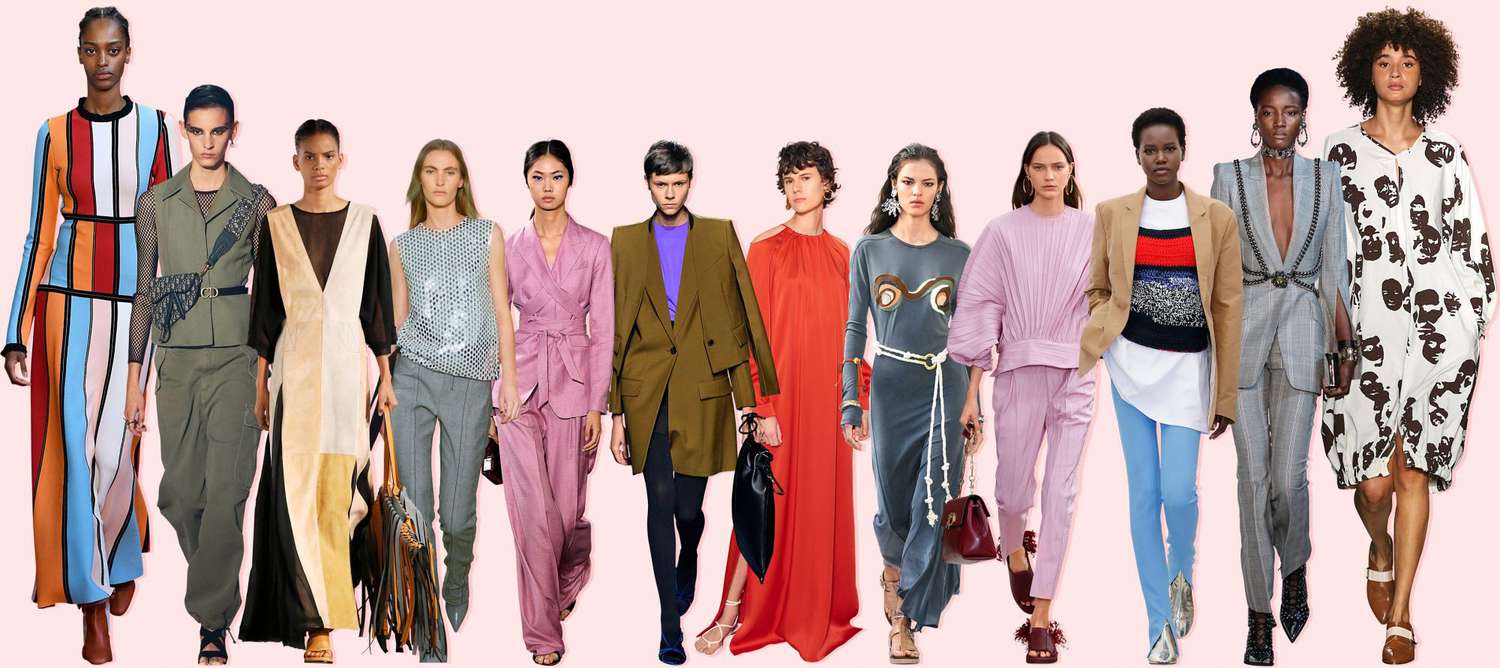How Branded Clothing Enhances Your Style Through Thoughtful Fabric Use
How Branded Clothing Enhances Your Style Through Thoughtful Fabric Use
Blog Article
Comprehending Apparel: The Significance of Material Choices in Your Wardrobe
The selection of textile in clothing plays a pivotal duty in both aesthetic appeals and functionality. Different products offer varying degrees of breathability, resilience, and comfort, directly influencing the wearer's experience. Comprehending these nuances can enhance one's wardrobe significantly. Yet, many overlook just how these selections can affect not just personal style, yet also sustainability. What textile decisions could redefine your wardrobe and straighten it with both design and responsibility?
The Role of Fabric in vogue and Capability

Common Textile Kinds and Their Qualities
When selecting clothing, understanding the attributes of common material kinds is essential for making informed options. Cotton, a widely-used natural fiber, is known for its breathability, gentleness, and versatility, making it ideal for informal wear and everyday garments. Bed linen, one more all-natural alternative, flaunts excellent moisture-wicking residential or commercial properties and an unique structure, perfect for cozy climates.Wool, frequently preferred for its heat and durability, varies in fineness; merino woollen is soft versus the skin, while coarser types are used for outerwear. Synthetic textiles like polyester and nylon offer toughness and resistance to creases, making them preferred for activewear and travel garments. Blends, which incorporate natural and synthetic fibers, can improve functionality while keeping convenience. By identifying these textile features, individuals can choose garments that straightens with their way of life and aesthetic preferences.
Breathability and Convenience: Selecting the Right Fabrics for Different Environments
Choosing the ideal materials for numerous environments can considerably enhance comfort and general wearability. Breathable products are important in warm climates, as they allow air circulation and moisture evaporation. Fabrics such as cotton, linen, and moisture-wicking synthetics successfully attract sweat far from the body, maintaining the user cool and dry. On the other hand, in cooler climates, thicker fabrics like wool or fleece supply insulation while preserving breathability, ensuring heat without overheating.Additionally, the choice of material weight plays an important function; light-weight fabrics are better for summer season, whereas much heavier alternatives are suited for winter season wear. Recognizing the one-of-a-kind properties of each material enables people to dress suitably for differing climate problems. Ultimately, choosing comfy and breathable textiles customized to specific environments can considerably boost everyday comfort and enhance the total experience of wearing apparel.
Resilience and Care: Exactly How Material Impacts Longevity of Your Wardrobe
Selecting the appropriate products can considerably influence the longevity and care demands of a closet. Fabrics such as cotton and polyester are known for their resilience and ease of maintenance, making them excellent for day-to-day wear. On the other hand, fragile products like silk and lace require even more careful handling and specialized cleansing approaches, which can enhance the time and effort needed for care. Branded Clothing.Durability is likewise influenced by the material's weave and surface; snugly woven textiles often tend to withstand damage much better than loosely woven options. In addition, synthetic blends usually offer enhanced toughness, combining the finest qualities of numerous fibers.Understanding the care directions for each textile is essential, as inappropriate cleaning or drying out can bring about early wear. click this Eventually, selecting sturdy materials can cause a longer-lasting closet, minimizing the regularity of replacements and adding to a much more sustainable fashion choice
The Effect of Material on Fit and Shape

Lasting Textile Selections: Making Eco-Friendly Choices
The impact of textile prolongs past fit and shape to include ecological variables, triggering an expanding interest in sustainable textile options. Environment-friendly materials, such as organic cotton, hemp, and Tencel, are getting grip amongst customers that prioritize sustainability in their closets. These products are frequently created with less chemicals and water, reducing their environmental footprint.Additionally, recycled materials, made from post-consumer waste, use an ingenious option to the textile market's contamination problem. Brands progressively embrace openness in their sourcing methods, permitting customers to make informed decisions concerning their purchases.Choosing sustainable materials not only sustains ethical techniques yet also encourages the garment industry to adopt even more liable production methods. As understanding of ecological concerns climbs, people are advised to reflect on the lasting influence of their material options, promoting a movement in the direction of a much more lasting and eco mindful technique to style.
Elevating Style: How Material Can Change an Outfit
While several might concentrate on shade and cut when choosing an attire, the selection of material plays a necessary duty in raising style and enhancing general appearance. Various materials share distinctive state of minds and messages; for instance, silk exudes luxury and class, while denim provides an informal, unwinded ambiance. The structure and drape of a material can dramatically change the shape, with organized materials offering a sleek appearance and softer ones producing an extra fluid, kicked back aesthetic.Moreover, the weight of the material influences wearability throughout seasons. Light-weight fabrics like linen and cotton are suitable for summer, while much heavier materials such as woollen and velvet supply warmth and style in colder months. Understanding textile buildings, such as breathability and stretch, also equips individuals to make educated choices that boost convenience without jeopardizing style. Inevitably, the best fabric can transform a clothing from common to remarkable, making it an important consideration in any kind of wardrobe.
Frequently Asked Concerns
Exactly how Do I Determine the Textile Web Content of My Apparel?
To identify textile web content, one can analyze care labels, conduct melt tests for fiber recognition, or consult published here textile examples. These techniques assist distinguish products, guaranteeing notified options for clothing treatment and upkeep in everyday wear.
Can Fabric Choice Affect My State Of Mind or Self-confidence?
Textile selection can greatly impact an individual's state of mind and confidence. Branded Clothing. Particular materials may stimulate feelings of comfort or beauty, while others can feel uncomplimentary or limiting, ultimately affecting self-perception and emotional health throughout the day
What Fabrics Are Finest for Delicate Skin?
For individuals with sensitive skin, natural textiles like bamboo, linen, and cotton are commonly advised. These materials are breathable, hypoallergenic, and less most likely to trigger irritation, making them appropriate choices for convenience and skin health and wellness.
How Do I Properly Wash and Treatment for Different Fabrics?
To properly wash and care for various textiles, one should visit their website think about each material's particular needs, consisting of temperature settings, detergents, and drying out techniques, guaranteeing long life and keeping the material's original qualities for suitable usage.
Are There Certain Fabrics for Athletic or Efficiency Put On?
Athletic or efficiency wear frequently uses materials such as spandex, polyester, and nylon. These materials are created for moisture-wicking, breathability, and adaptability, enhancing activity and convenience throughout exercises while offering durability and support. Alternatively, in chillier climates, thicker textiles like wool or fleece offer insulation while preserving breathability, making sure warmth without overheating.Additionally, the selection of fabric weight plays an essential duty; light-weight textiles are more effective for summer, whereas larger choices are fit for winter months wear. In comparison, fragile products like silk and shoelace need even more cautious handling and specialized cleansing approaches, which can enhance the time and initiative needed for care.Durability is likewise influenced by the textile's weave and coating; snugly woven materials tend to stand up to wear and tear far better than freely woven alternatives. In comparison, rigid fabrics can limit activity yet supply a timeless, refined look.Moreover, the thickness and structure of the fabric can affect the aesthetic understanding of body shape. The influence of textile prolongs beyond fit and shape to incorporate environmental variables, motivating an expanding rate of interest in lasting material choices. The texture and drape of a fabric can drastically change the silhouette, with organized materials offering a polished appearance and softer ones producing an extra fluid, relaxed aesthetic.Moreover, the weight of the textile influences wearability across periods.
Report this page